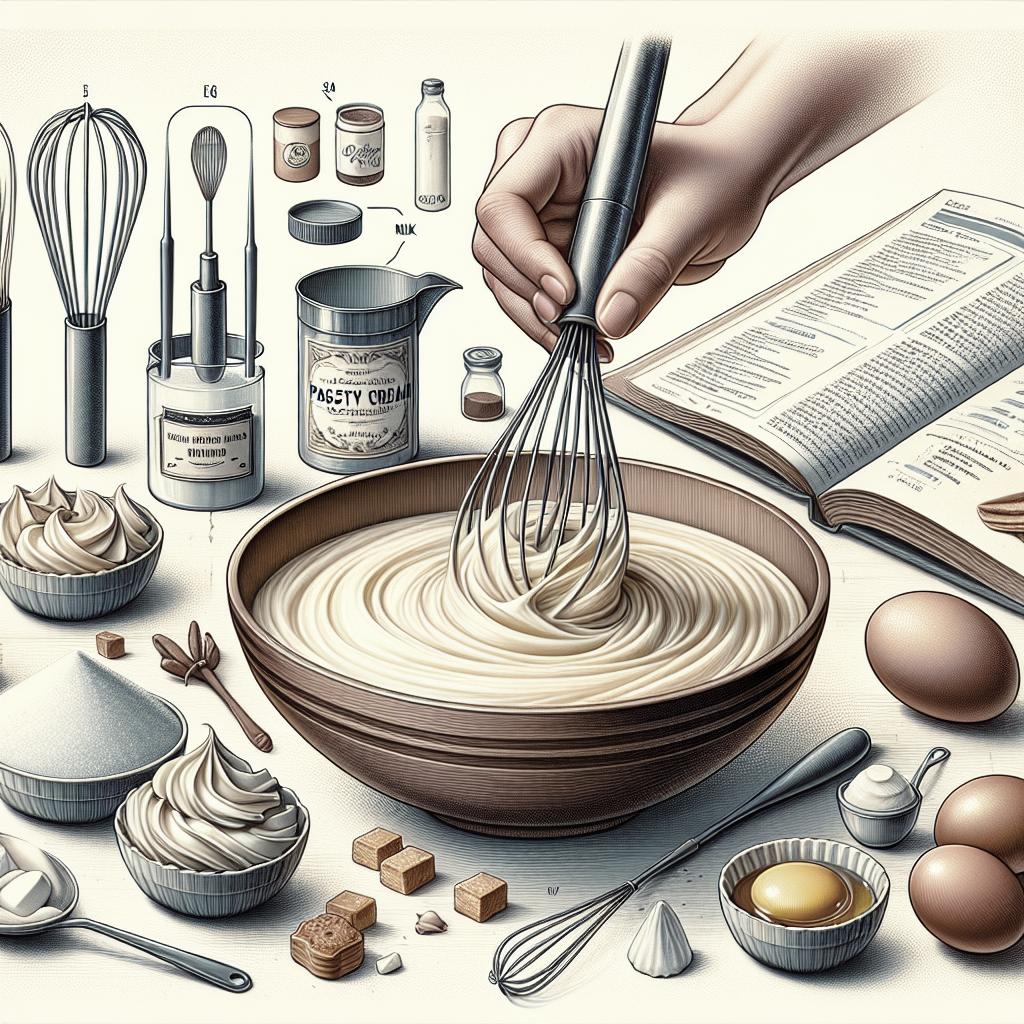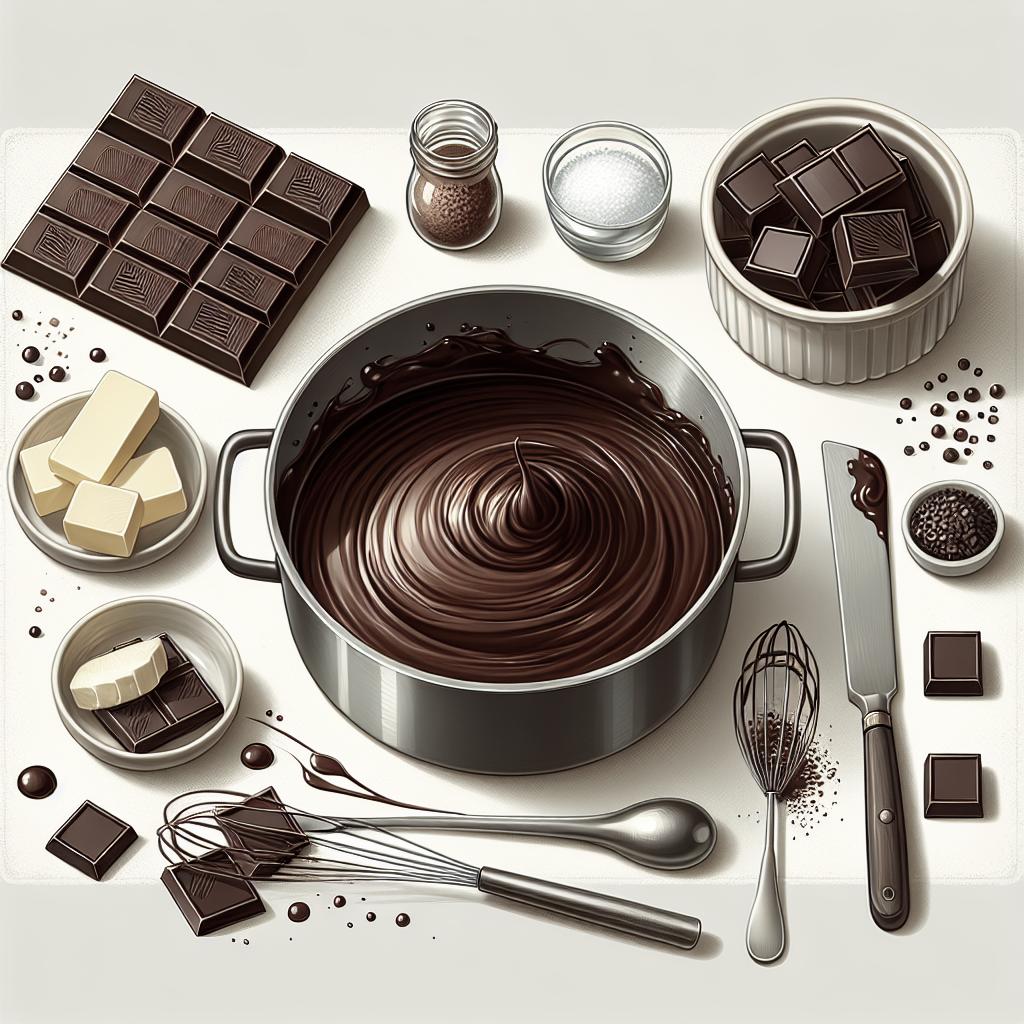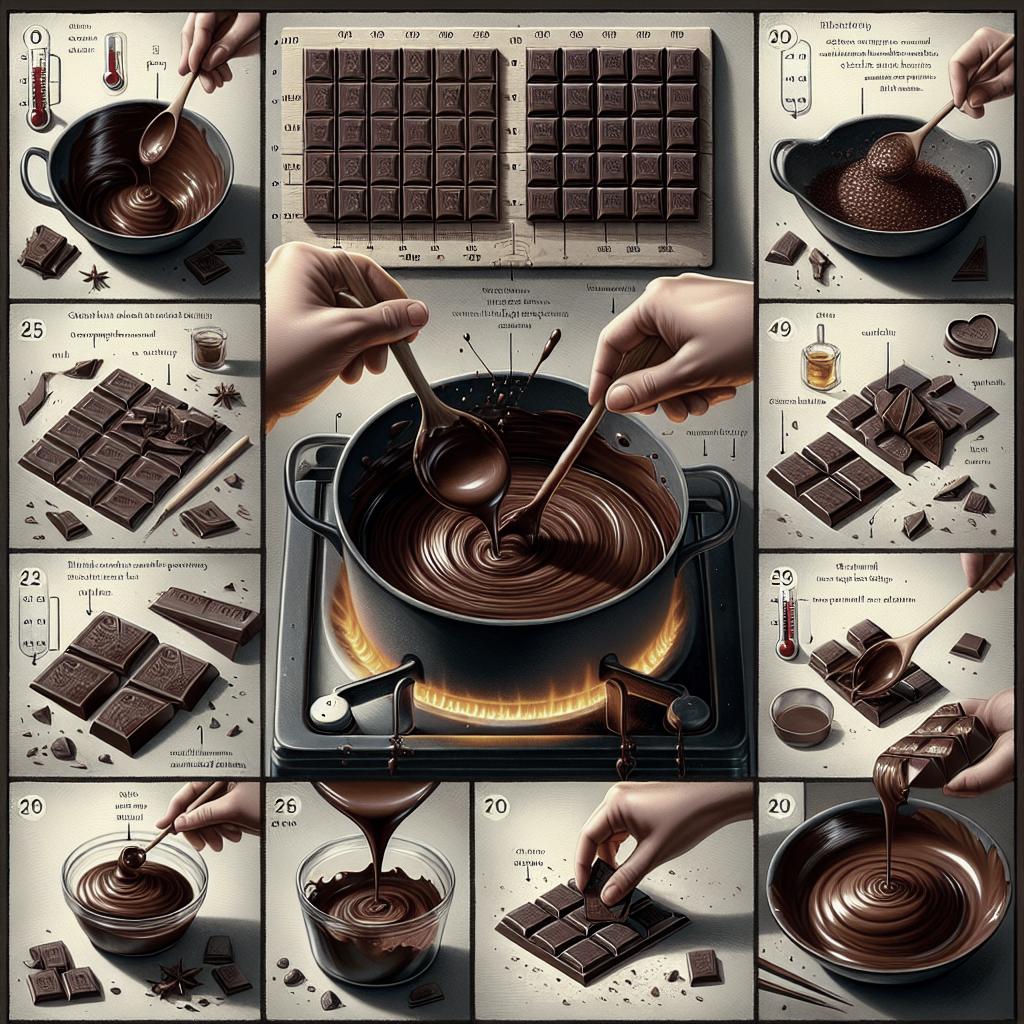<>
“`
Imagine a silky, luscious pastry cream. It’s the perfect filling for éclairs, tarts, and cakes. But how do you make a lump-free pastry cream that’s every bit as perfect as what you see in patisserie windows? This guide will walk you through everything you need to know, from understanding the basics of pastry cream to mastering the techniques needed to create a flawless version at home. Along the way, we’ll discuss essential ingredients, step-by-step processes, and share troubleshooting tips to ensure your pastry cream comes out perfectly smooth every time. Whether you’re a novice baker or a seasoned pro, this guide is here to demystify the art of making lump-free pastry cream.
What is pastry cream?
Pastry cream, also known as crème pâtissière, is a classic component in many French desserts. It’s a rich, creamy custard made predominantly from milk, eggs, sugar, and a thickening agent like cornstarch. Unlike other custards that are baked, pastry cream is cooked on the stovetop and then chilled until ready to use.
This versatile filling is essential in the world of pastry, providing a silky base for an array of sweets from fruit tarts to cream puffs. The consistency of pastry cream can range from firm to creamy, depending on how it’s intended to be used in a dessert.
What’s the difference between pastry cream and custard?
While pastry cream and custard share many similarities, there are notable differences that set them apart. Custard is generally a more umbrella term that includes many types of egg-based and sweetened liquids thickened typically through gentle cooking. Examples include Crème Anglaise and the base for Crème Brûlée.
Pastry cream, on the other hand, is specifically thickened with cornstarch or flour and cooked to a firmer consistency than other custards. This makes it ideal for piping into pastries and providing structure in desserts, whereas custard is often more fluid and spoonable.
Ingredients (and ingredient notes)
Creating a perfect pastry cream starts with the right ingredients. Here are the essentials: milk, eggs, sugar, cornstarch, butter, and vanilla. These form the base of most recipes, but each plays a crucial role in achieving the desired texture and flavor.
To perfect pastry cream requires understanding the function of each ingredient. Freshness and quality here can make significant differences in your final product, especially for elements like vanilla and butter, where flavors are potent and impactful.
The importance of eggs
Eggs are a foundational ingredient in pastry cream, providing richness and helping to thicken the mixture. The proteins in the eggs coagulate upon heating, lending structure and stability to the cream. This is why it’s crucial to temper the eggs correctly to prevent them from curdling.
It’s typically the egg yolks that are used, as they offer a smoother texture and brighter color. Egg whites can make the mixture more gelatinous and less creamy, which is often not desirable in pastry cream recipes.
The importance of cornstarch
Cornstarch acts as the primary thickening agent in most pastry cream recipes. It helps to achieve a lump-free, smooth consistency by gelatinizing when heated. The use of cornstarch stabilizes the cream in a way that egg yolks alone cannot.
A common issue when using cornstarch is achieving the right consistency without overcooking, which can break down the starch and lead to a runny cream. Careful attention during the thickening process is pivotal to prevent this from happening.
How to make pastry cream (with recipe tips)
Step one – Heat the milk
Start by heating the milk in a saucepan over medium heat until it’s steaming but not boiling. This step helps to infusion any flavors you might want to add, such as vanilla beans or strips of lemon peel. Pre-heating the milk also helps in the tempering process, making it quicker and more seamless.
Using whole milk is recommended for the best texture and richness. Lower fat milk can be used but may result in a thinner, less creamy consistency.
Step two – Mix the eggs, cornstarch, and sugar together in a separate bowl
In a separate bowl, whisk together the egg yolks, cornstarch, and sugar. This mixture should be smooth and well-combined, with no lumps of cornstarch. It’s vital to mix these ingredients thoroughly to ensure they integrate seamlessly with the hot milk.
Some recipes call for a splash of milk or a bit of salt at this stage to help dissolve the cornstarch and sugar better, ensuring a smoother final product.
Step three – Temper the eggs
Tempering the eggs involves slowly adding the hot milk to the egg mixture while continuously whisking. This gradual introduction of heat prevents the eggs from scrambling, creating a smooth blend. Pouring too quickly or not whisking vigorously enough can result in a curdled mixture.
Return the tempered egg mixture to the saucepan for further cooking. This step gently heats the eggs and ensures a cohesive, lump-free base before the thickening process continues.
Step four – Thicken the pastry cream mixture
Continue to heat the mixture on medium, whisking constantly. This helps to prevent lumps from forming as the cornstarch activates and the mixture thickens. You’ll start to see it take on a pudding-like consistency; keep whisking until thick and smooth.
If you notice any lumps forming, remove the pan from heat and whisk vigorously until smooth. It’s crucial to attend to the heating process to prevent any sticking or burning at the bottom of the pan.
Step five – Bring the vanilla pastry cream to a boil
Bringing the mixture to a boil ensures that the starch is fully activated, giving the pastry cream its body. Boil for about one minute, continuing to whisk to prevent burning or sticking at the bottom.
It’s at this stage that the aromatic qualities of the cream come out, especially if you’ve infused your milk with vanilla beans or other flavors. The boiling ensures everything is well combined and smoothly textured.
Step six – Add the butter and gelatin (if using)
Once the cream has thickened and boiled, remove the pan from heat and stir in the butter until completely melted. Butter enriches the cream, adding silky smoothness and a rich mouthfeel. Some recipes might call for the addition of gelatin if a firmer set is needed.
Gelatin is typically used in desserts requiring more structure, like layered cakes or firm tart fillings. It helps the cream to hold its shape without being overly stiff.
Step seven – Strain the pastry cream
For a perfectly smooth, lump-free finish, strain the pastry cream through a fine-mesh sieve. This step catches any small bits of cooked egg or cornstarch lumps that might have formed.
Straining can also help to remove the vanilla bean pods or any added flavoring agents, leaving a perfectly smooth, homogenous mixture ready for cooling.
Step eight – Store and cool down the pastry cream
Transfer the strained cream into a clean bowl and cover with plastic wrap pressed directly onto the surface of the cream. This prevents a skin from forming as it cools. Let it cool to room temperature before refrigerating.
It’s recommended to chill the pastry cream for at least two hours or until fully set. This allows the flavors to meld together and the cream to firm up.
Step nine – Prepare the pastry cream for use
Before using the pastry cream, give it a good whisk to smooth out any clumps that may have formed during chilling. This makes it easier to pipe or spread into desserts.
Use the cream as a filling for éclairs, tarts, or other pastries, enjoying its rich, smooth texture and delightful flavor. Properly made and stored cream can elevate any dessert with its lusciousness.
What is pastry cream used for? (Desserts with pastry cream)
Pastry cream is incredibly versatile and a cornerstone in many classic desserts. It’s commonly used in éclairs, tarts, cream puffs, and mille-feuille. Each of these desserts relies on the stability and creaminess of perfect pastry cream.
It’s not limited to traditional French desserts. Modern reinterpretations of pastries, fusion desserts, and even some cakes and donuts benefit immensely from the inclusion of this rich and smooth filling.
How to use pastry cream with different textures as a filling
The texture of pastry cream can be adjusted based on its intended use. For firmer fillings, reducing the quantity of milk or increasing cornstarch can provide a thicker cream. Conversely, a lighter cream can be achieved using whipped cream folded into the chilled pastry cream, creating a Diplomat Cream.
This adaptability makes pastry cream ideal for various desserts, from the firm structure needed for tart fillings to the light, airy consistency required for choux pastries.
Pastry cream with different sweetness levels
The sweetness of pastry cream can be adjusted according to taste and the type of dessert you’re pairing it with. Reducing sugar for fruit tarts, where the fruit provides ample sweetness, or increasing for more dessert-centric applications, ensures balance and enhances the overall flavor.
Moreover, the addition of extra extracts or alcoholic flavorings, like rum or Kirsch, can offer different levels of complexity to the cream, creating unique and customized dessert experiences.
Recipe variations
Experimenting with flavors and ingredients can turn a basic pastry cream into a masterpiece tailored for specific desserts. Adding cocoa powder for a chocolate pastry cream or coffee extract for mocha-flavored cream opens up new dimensions of flavor.
Lemon zest or citrus extracts can create a refreshing twist, balancing the creaminess with a hint of tartness. Nut pastes, like almond or hazelnut, can lend an extra depth of flavor and marry well with certain pastries.
Dietary variations
For those with dietary restrictions, variations can include using non-dairy milk, like almond or coconut milk, which impart their unique flavors. Using a sugar substitute can create a sugar-free version of pastry cream, catering to those needing such adjustments.
Vegan versions can also be achieved by replacing eggs with cornstarch or agar-agar and using plant-based butter, ensuring everyone can enjoy the delights of pastry cream regardless of dietary needs.
Storage instructions
Pastry cream should always be stored covered with plastic wrap pressed directly onto the surface to prevent a skin from forming. It can be kept in the refrigerator for up to 3 days.
Freezing pastry cream is generally not recommended as it can alter the texture, making it grainy or watery upon thawing. If you foresee using it in multiple desserts within a short timeframe, preparing in smaller batches is advisable.
Frequently asked questions and troubleshooting
Common issues with pastry cream can include lumps, curdling, or runniness. Each of these problems can typically be addressed with correct technique and slightly adjusting the recipe.
For example, preventing lumps comes down to proper whisking and heating method, while curdling can often be avoided by careful tempering of the eggs. Runny cream may indicate insufficient cooking time or incorrect ingredient ratios.
Equipment and tools I use for this recipe
Essential tools for making pastry cream include a heavy-bottomed saucepan to ensure even heating, a whisk for constant stirring, and a fine-mesh sieve for the final straining step.
Measuring cups and spoons, as well as a thermometer for precise temperature control, can also enhance the quality and reliability of your pastry cream-making process.
Creme Patissiere (Vanilla Pastry Cream)
Ingredients:
- 2 cups whole milk
- 6 large egg yolks
- 1/2 cup granulated sugar
- 1/4 cup cornstarch
- 2 tablespoons butter
- 1 vanilla bean pod or 1 teaspoon vanilla extract
Instructions:
- Heat the milk and vanilla in a saucepan until steaming.
- In a separate bowl, whisk together the egg yolks, sugar, and cornstarch until smooth.
- Slowly temper the eggs by adding the hot milk while whisking constantly.
- Return the mixture to the saucepan and cook until thickened, continuing to whisk.
- Bring to a boil for one minute, then remove from heat and add butter.
- Strain the pastry cream into a bowl and cover with plastic wrap pressed onto the surface.
- Let cool to room temperature, then refrigerate until ready to use.
Tips & Tricks
Ensure constant whisking to prevent lumps and curdling. Strain the final mixture for extra smoothness. For added flavor, infuse the milk with other ingredients like lemon zest or almond extract.
Nutrition Information:
Approximate values per serving (makes approximately 2 cups): Calories: 180, Fat: 9g, Carbohydrates: 22g, Protein: 4g
More Recipes You’ll Love…
Next steps
| Section | Contents |
|---|---|
| Introduction | Summary of the blog post on making lump-free pastry cream. |
| What is pastry cream? | Definition and uses of pastry cream. |
| Ingredients (and ingredient notes) | The role and importance of key ingredients in making pastry cream. |
| How to make pastry cream (with recipe tips) | Detailed step-by-step guide to making pastry cream. |
| What is pastry cream used for? (Desserts with pastry cream) | Different desserts and uses for pastry cream. |
| Recipe variations | Flavor and dietary variations of pastry cream. |
| Storage instructions | How to properly store pastry cream. |
| Frequently asked questions and troubleshooting | Common issues and their solutions. |
| Creme Patissiere (Vanilla Pastry Cream) | Detailed recipe with ingredients, instructions, tips, and nutrition information. |
“`


